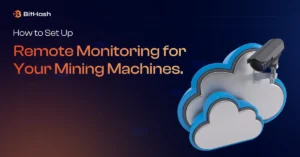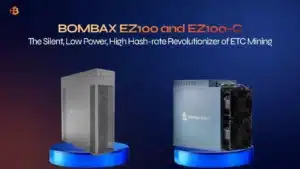In the fast-paced world of digital finance, cryptocurrency mining continues to be a foundational process that fuels decentralized networks. As the demand for efficiency, scalability, and profitability grows, miners face a critical choice: hosted mining or cloud mining. Both methods offer distinct pathways to harness hash power and earn rewards, but they differ significantly in terms of control, cost, and technical involvement.
In this guide, we’ll explore how these models work, the role of mining rigs, mining hardware, and mining contracts, and help you determine which approach aligns best with your goals. Whether you’re investing in cutting-edge mining equipment or seeking a hassle-free entrance into the crypto space.
1. What is Hosted Mining?
Hosted mining is a model of cryptocurrency mining where individuals or companies purchase their own physical mining hardware, typically specialized mining rigs such as ASICs or high-performance GPUs, but instead of operating them at home or in a private facility, they outsource their setup to a professional data center. These centers are equipped to handle the power, cooling, and maintenance requirements of large-scale bitcoin mining and other crypto operations.
By placing your mining rigs in a dedicated facility, you leverage its infrastructure to optimize your mining power and reduce technical headaches, while still retaining ownership of your equipment and control over your mining activities.
Key Features of Hosted Mining:
Hosted mining has become a prominent strategy within the cryptocurrency mining industry, offering enhanced performance and ownership compared to more hands-off alternatives like cloud mining. Here’s an in-depth look at its defining features:
- When you choose hosted mining, you purchase your own mining hardware, often high-performance ASIC miners or custom-built rigs. These mining rigs belong solely to you, giving you full control over resale value, system upgrades, and long-term maintenance decisions. Unlike users in cloud mining, you’re not dependent on third-party cloud mining contracts with limited customization.
- Your mining rigs are not shared with other participants, as is common in many cloud mining models. This exclusivity ensures stable hash power delivery and eliminates risks associated with diluted performance. The setup is often deployed in specialized mining farms, built to withstand high-intensity loads and optimize mining output.
- Hosting providers manage your hardware in top-tier mining farms where they oversee cooling systems, repairs, and energy optimization. These setups reduce electricity costs, a crucial factor that directly affects profitability in bitcoin mining and other cryptocurrency mining operations. With trained technicians handling the day-to-day logistics, you avoid much of the complexity associated with managing mining infrastructure yourself.
- Because you own the mining hardware outright, you retain 100% of mined rewards (minus hosting fees), which can be a major advantage during favorable market conditions and when mining difficulty is low. You also benefit from full access to performance data like hash rate and power usage, allowing for better mining strategy decisions using advanced mining software.
- Hosted mining arrangements typically come with tailored mining contracts, offering flexibility in terms of service packages, uptime guarantees, and upgrade paths. Unlike generic cloud mining contracts, these agreements give miners a more proactive role in their operations.
While cloud mining remains popular due to its convenience, especially for newcomers, the limited transparency and potential for fluctuating hash power can affect earnings. Hosted mining, by contrast, offers greater control and independence, making it ideal for those who understand mining pools, want to respond quickly to changing market conditions, and seek deeper involvement in the cryptocurrency mining ecosystem.
Drawbacks of Hosted Mining:
While hosted mining offers full control and potential long-term profitability, it’s not without its challenges, especially when compared to more convenient solutions like cloud mining. Here’s a deeper look at some of the main disadvantages to consider:
- Setting up hosted bitcoin mining operations requires purchasing expensive ASIC miners and other specialized mining equipment. These high-performance machines offer serious hash power, but they can be a significant financial barrier for newcomers or small-scale miners. In contrast, cloud mining allows users to start mining without investing in physical hardware, making it a more accessible option.
- Most hosting arrangements involve extended mining contracts, often locking miners in for 12–36 months. During this time, market conditions can change, and mining difficulty can increase, which affects profitability. Cloud mining contracts, by comparison, may offer more flexibility, allowing users to choose shorter durations or scale up/down based on performance.
- Technology in the mining industry evolves rapidly, and today’s top-tier ASIC miners may become obsolete in a matter of months. Hosted miners bear the full brunt of this depreciation, unlike cloud mining users who don’t own physical hardware and therefore aren’t tied to diminishing asset value.
- Besides the initial hardware costs, hosted mining also brings recurring electricity costs, maintenance fees, and infrastructure charges. These expenses can eat into your margins, especially during times of reduced mining reward. Cloud mining providers, on the other hand, usually roll operational costs into a single contract price, simplifying budgeting for users.
Hosted mining is ideal for seasoned miners who want complete control over their hash power, hardware configuration, and strategy. It appeals to those seeking deeper involvement in the cryptocurrency mining space and who are willing to navigate the risks for higher potential returns.
2. What is Cloud Mining?
Cloud mining is a streamlined approach to participating in the cryptocurrency mining industry without the burden of owning or managing physical mining equipment. Instead of setting up personal rigs, users rent hashing power from a remote hosting company that owns and operates mining infrastructure at large-scale data centers. These facilities are designed to optimize energy consumption, reduce operational complexity, and deliver consistent mining returns through a user-friendly contract-based system.
This model has gained popularity among beginners, casual investors, and individuals seeking passive exposure to digital assets like Bitcoin, without engaging in the more hands-on aspects of traditional mining.
Key Features of Cloud Mining
- No Hardware Ownership Cloud mining eliminates the need to purchase or maintain expensive mining rigs, making it a low-barrier option for entry into the mining industry. Users don’t need to worry about technical specs, system upgrades, or physical storage.
- Quick and Easy Setup With a simple cloud mining contract, users can begin mining almost instantly. There’s no need to build, install, or configure equipment—everything is managed by the hosting company behind the scenes.
- Scalable Mining Power Cloud mining platforms often allow users to increase or decrease their hashing power by adjusting the number of purchased contracts. This flexibility makes it easier to respond to changes in market volatility and mining profitability.
- No Maintenance Worries All technical upkeep—repairs, cooling, software updates, and energy management—is handled by the provider. This includes balancing energy consumption and optimizing for lower electricity bills, which can significantly impact bottom-line earnings.
Drawbacks of Cloud Mining
- Lower Profitability Because fees for maintenance, infrastructure, and administrative services are embedded in the contract cost, cloud mining often delivers smaller margins compared to hosted or self-operated mining. These fixed fees can eat into profits, especially during periods of high market volatility or rising electricity bills.
- Scam Risks The cloud mining space has been targeted by fraudulent schemes posing as legitimate services. Some platforms, such as HashOcean and MiningMax, were revealed to be Ponzi operations, leaving investors at a loss. It’s essential to carefully vet any cloud mining provider before committing funds.
- Lack of Hardware Control Users have no direct access to the physical infrastructure, no oversight over performance, uptime, or maintenance schedules. You are fully dependent on the hosting company for operations and trust their practices to deliver consistent mining returns.
Cloud mining is ideal for beginners and investors who want exposure to digital assets without diving into the complexities of equipment management or technical oversight. It’s a passive option that allows users to benefit from crypto mining trends while the provider handles the heavy lifting. Although not typically as profitable as owning and operating hardware, cloud mining offers simplicity and scalability that appeal to a broad audience.
Some modern providers are also exploring renewable energy sources to power their mining farms, helping reduce the environmental impact of crypto operations. A notable advancement in balancing sustainability with growth in the mining industry.
Read More about GPU Mining vs ASIC Mining: What’s Better in 2025?
3. Key Differences Between Hosted and Cloud Mining
Feature | Hosted Mining | Cloud Mining |
| Hardware Ownership | You own the miners. | No hardware ownership. |
| Upfront Cost | High (buying ASICs/GPUs). | Low (only contract fees). |
| Maintenance | Handled by hosting provider. | Fully managed by provider. |
| Profitability | Higher (keep all rewards). | Lower (fees reduce profits). |
| Flexibility | Long-term commitment. | Short-term contracts available. |
| Risk of Scams | Lower (you control hardware). | Higher (many fraudulent sites). |
4. Which One Should You Choose?
Choosing between hosted mining and cloud mining depends largely on your investment goals, technical expertise, and risk tolerance in the evolving cryptocurrency mining industry.
Hosted mining is best suited for individuals or companies who want full control over their mining operations. If you’re comfortable purchasing specialized mining hardware such as ASIC miners, configuring mining software, and navigating mining pools, hosted mining can offer greater transparency and higher profitability over time. You retain ownership of your equipment and can adapt your setup to changing market conditions, mining difficulty, and energy consumption. While the upfront costs are substantial and long-term contracts may limit flexibility, the potential for mining returns is often stronger, especially during favorable market cycles.
Cloud mining, on the other hand, offers simplicity and ease of entry for those who don’t want to manage mining infrastructure. Without needing to buy mining rigs or deal with electricity bills, users can get started quickly through cloud mining contracts. This model is particularly appealing to beginners or investors interested in passive exposure to digital assets like Bitcoin. Though cloud mining typically yields lower profits due to service fees and limited control, it removes the burden of maintenance and hardware depreciation. If convenience and minimal involvement are priorities, cloud mining may be the more practical path forward.
5. Final Thoughts
Both hosted and cloud mining have their pros and cons. Hosted mining is better for serious miners who want maximum profitability and hardware ownership, while cloud mining suits passive investors who prefer simplicity.
Before choosing, research providers carefully, especially in cloud mining, where scams are common. Always verify a company’s reputation before investing.





